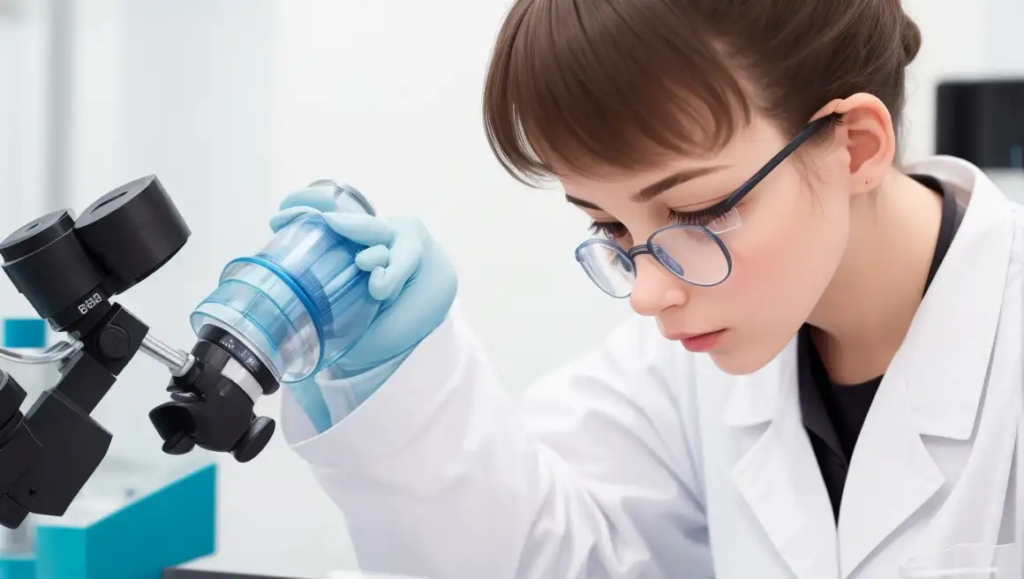A good microscope is an essential tool for biology students. When choosing a microscope, biology students should consider magnification range, lens and optical quality, illumination method, and sturdiness/portability.
This article discusses what to look for in a biology microscope and recommends top choices at different price points. It also covers key considerations when selecting a microscope, using it effectively in the lab, maintenance tips, and frequently asked questions.

Read on to find the best microscope for your needs and budget as a biology student.
What to look for in a microscope for biology students
An ideal microscope for biology students should have:
Magnification range
Most biology applications require magnifications from 40x to 1000x. Look for a microscope with multiple objective lenses offering this range.
Lens and optical quality
Look for at least achromatic lenses for crisp, color-corrected images. Higher-end microscopes have plan or semi-plan objectives with superior edge-to-edge clarity.
Illumination method
Top- (episcopic) and bottom- (diascopic) illumination allow viewing of unique specimens. LED or halogen lights provide bright, white illumination.
Sturdiness and portability
A stable, durable stand prevents slides from slipping during observation. Portability aids transport between lab/classroom.
Best microscopes for biology students
The best microscopes for biology students offer a balance of strong optics, useful features, and good ergonomics at different price points.
Omano OM157
A solid student microscope with strong optics and useful features like 360° rotating monocular head, Abbe condenser, and LED/mirror illumination. Offers magnifications from 40x to 1000x. Excellent value around $100.
AmScope M500B-MS
A step up with compound body, achromatic lenses, 120x-1200x magnification range, LED and mirror lighting. Durable metal frame, coaxial coarse/fine focus. Ideal for detailed histology, pathology slides. Under $200.
Celestron 44104
A professional-grade microscope with excellent optics and useful features for biology students. Offers 40x-1600x magnification, LED lighting with brightness control, rotating binocular head. Over $500 but a good long-term investment.
Key considerations when choosing a microscope
Three key factors should guide your selection:
Budget
Microscope prices span from $50 to over $1000. Set your budget then look for the best set of features within it. Avoid the cheapest poor-quality models.
Features needed
Consider what features you require for your coursework/experiments and choose accordingly. Pay for additional features only if you will use them.
Ease of use
Look for an ergonomic design with adjustable eyepieces, smooth focus controls, and accessibility of parts needing frequent adjustments.
How to use a microscope effectively
To leverage your microscope fully, utilize proper technique:
Prepare the sample correctly
Properly make slides/sections and stain if needed to reveal details of interest.
Adjust lighting and focus
Start with low magnification/brightness and adjust gradually to clearly resolve specimen features.
Use oil immersion if needed
With high magnification objectives, add immersion oil between lens and slide for maximum resolution.
Take good notes
Systematically scan slide and accurately record observations. Annotate drawings to document details.
Maintaining your microscope
Caring for your microscope well will sustain peak performance for long:
Clean the lenses
Gently wipe optical surfaces to remove dust and oil. Use lens tissue only.
Store properly
Keep covered in a clean, dry, safe location when not in use.
Handle gently
Always carry a microscope with two hands fully supporting the frame. Avoid knocks/drops.
Conclusion
An entry-level microscope costing around $100-200 should suffice for most high school and college biology students, if chosen carefully based on optics, magnification, lighting, and ergonomic design. Learn the basic techniques to leverage your microscope effectively in lab experiments.
With responsible use and maintenance, a good student microscope should serve for many years assisting explorations into the microscopic world! Best microscope for biology student? Get one matching your needs and nurture your passion for biology!years,years,
FAQs
What magnification do I need?
Most biology studies need 40x to 400x magnification. 1000x is useful for cytology/histology samples. Beyond 2000x requires specialized equipment.
Are expensive microscopes worth it?
Up to $300, you get significantly better optics and durability. Above it, gains are incremental unless you need advanced features.
Is a digital or optical microscope better?
Optical microscopes allow seeing finer details under higher magnifications. But digital microscopes can facilitate image sharing and documentation.
What features should I look for?
Priority features are strong optics (achromatic or better), 40x-1000x magnification range, LED/halogen lighting, sturdy metal frame. Nice extras are camera attachments, digital displays.
What samples can I view?
Light microscopes can view stained/unstained sections, smears, cell/tissue cultures, microorganisms. Electron microscopes are needed for viruses, proteins, DNA analysis.
